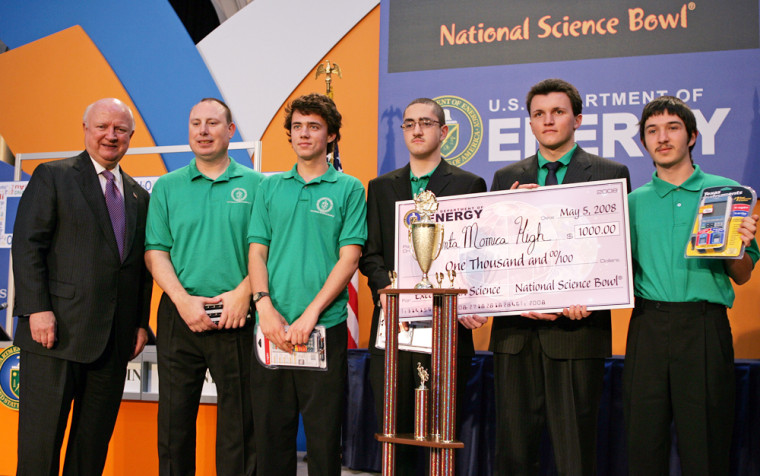Four California high school students used a complex mathematical function called a Maclaurin series to come up with the correct answer — "two-thirds" — Monday to win the Energy Department's annual National Science Bowl.
The team from Santa Monica High School in Santa Monica, Calif., beat 66 other schools and won a trip to the International Youth Science Forum in London this summer.
"We felt that if we were going to win it, it was going to be this year. Our team was just really solid," Dimitry Petrenko, 18, the team's earth sciences specialist, said after the win.
Petrenko and his teammates, Alexandre Boulgakov, 16, Marino Di Franco, 16, and Ian Fels Scheffler, 17, planned to celebrate by going out to dinner.
"Each of our guys really knows their stuff," said coach Ingo Gaida, a biology teacher at Santa Monica High School. "It's not like they're just studying for the competition; they just really love their subjects."
A team from Mira Loma High School of Sacramento, Calif., placed second, winning a trip to a nuclear science facility in France. Thomas Jefferson High School for Science & Technology in Alexandria, Va., placed third and will get a trip to an accelerator facility in Virginia. Fairview High School of Boulder, Colo., came in fourth place.
More than 300 high school students on 67 teams participated in the competition. They represented 42 states, the District of Columbia, Puerto Rico and the U.S. Virgin Islands. The top 16 finishers each received $1,000 for their school science departments.
